Abstract
Population and family studies show that predisposition to type I diabetes (IDDM) is multifactorial, and that polymorphisms in the MHC region contribute substantially to the susceptibility to IDDM. In the present study the association of polymorphisms in the CD4 and the delta subunit of CD3 with IDDM were examined in a Belgian population. We observed that the frequency of the CD A4/A4 genotype and of the CD3 91 allele were significantly increased P = 0.0077) and decreased (P = 3.8 x 10(-5), respectively, in IDDM compared with controls. These results therefore suggest that CD4, CD3 or neighbouring genes might contribute to IDDM susceptibility. These results are, however, preliminary and cannot be considered as established until re-tested in a new population.
Full text
PDF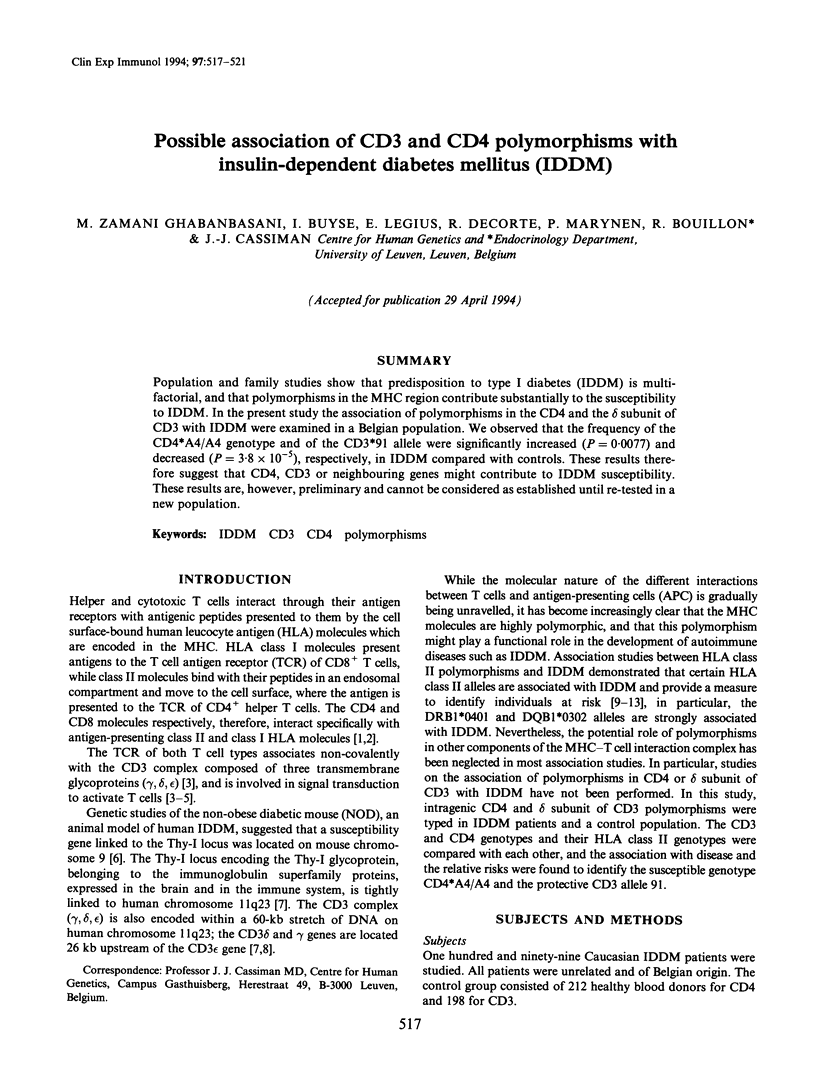
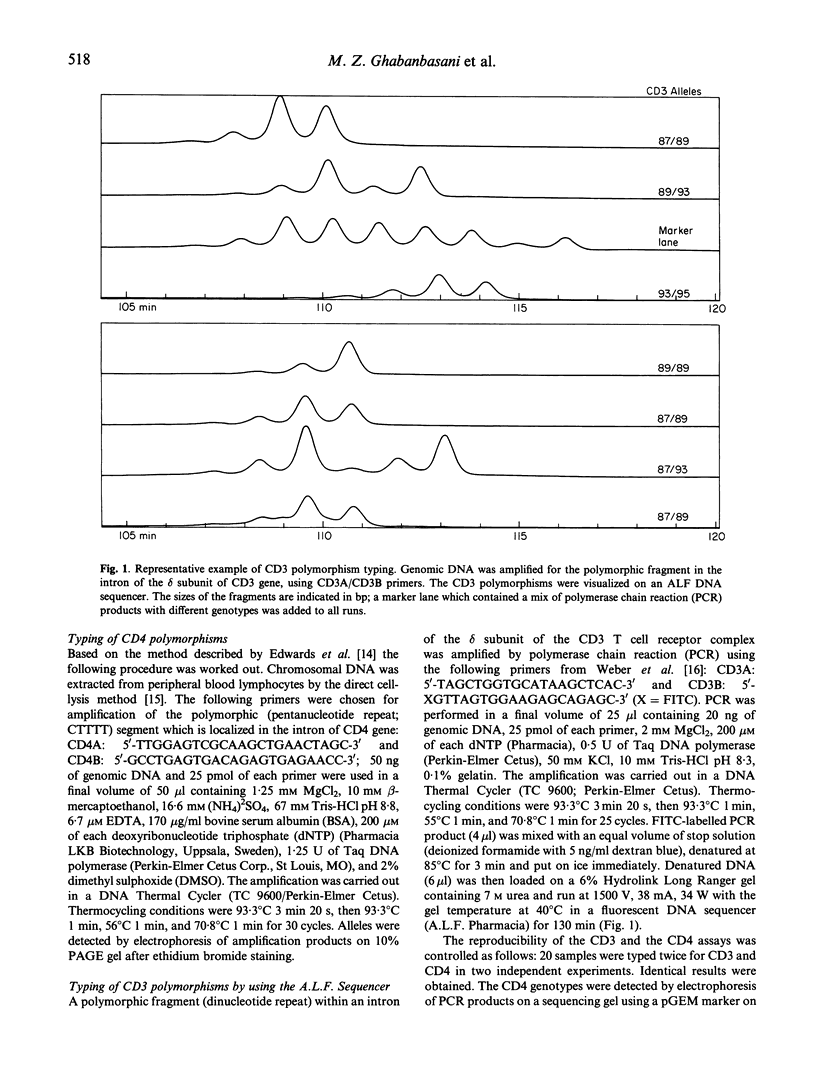
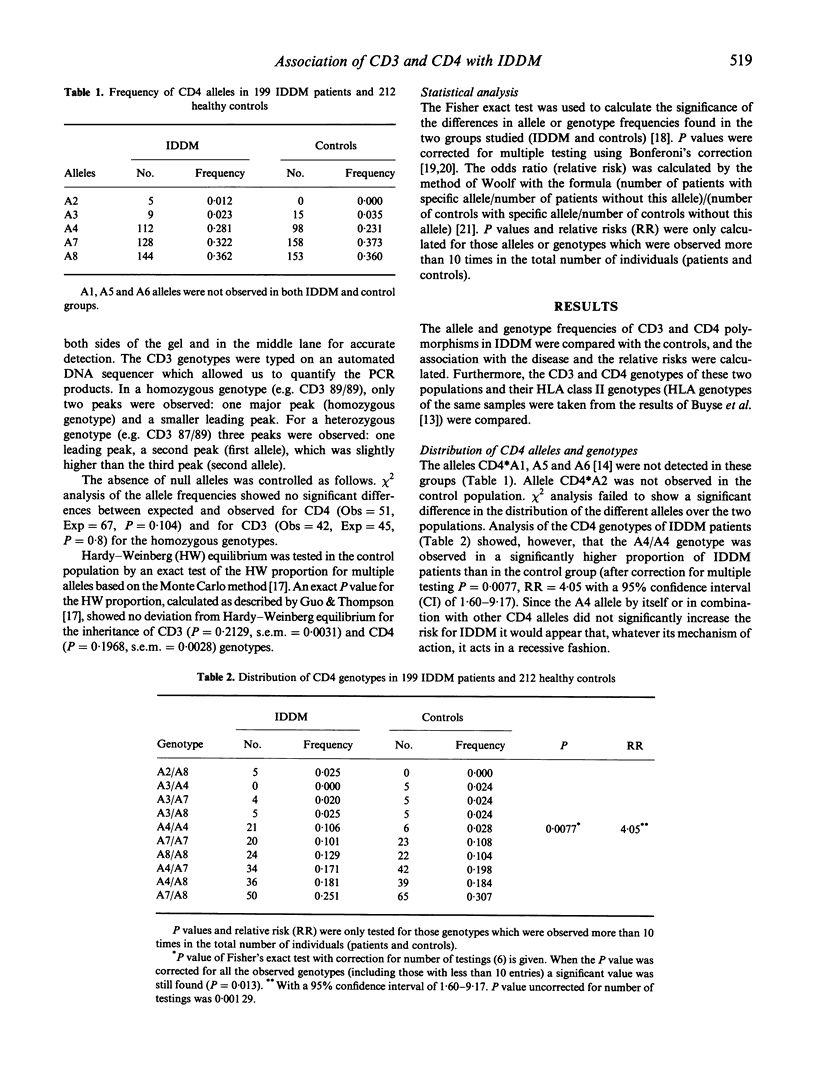
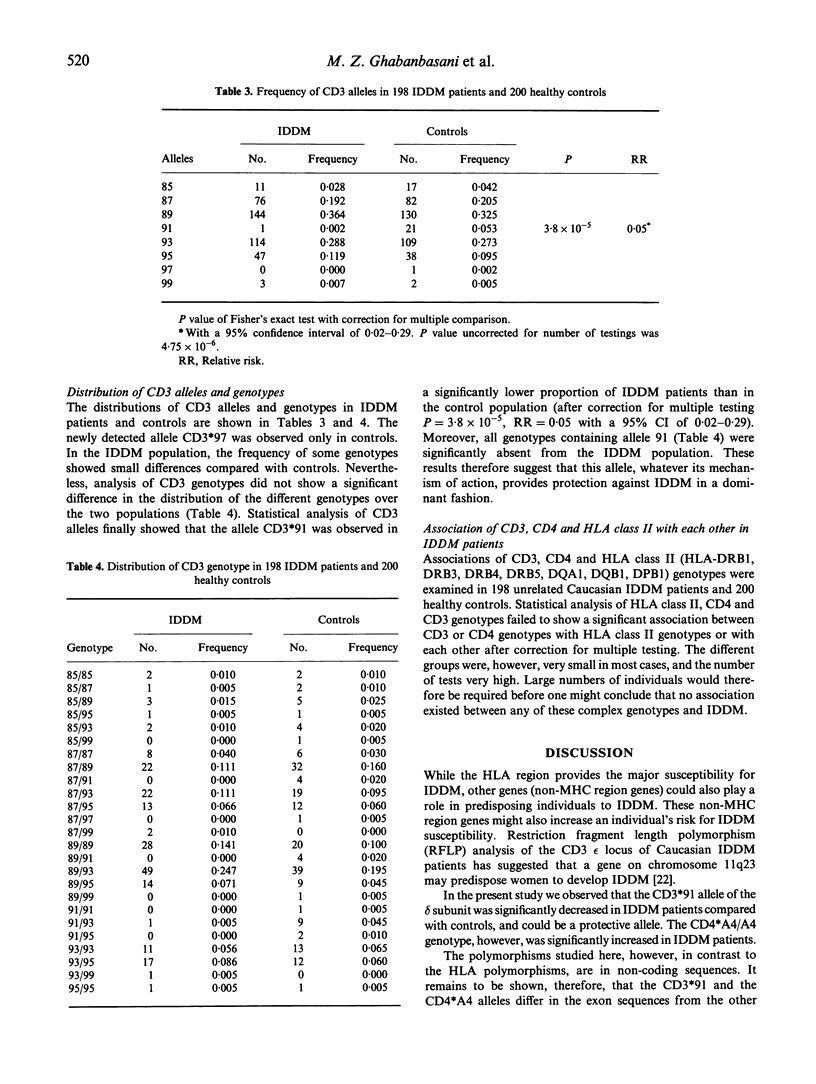
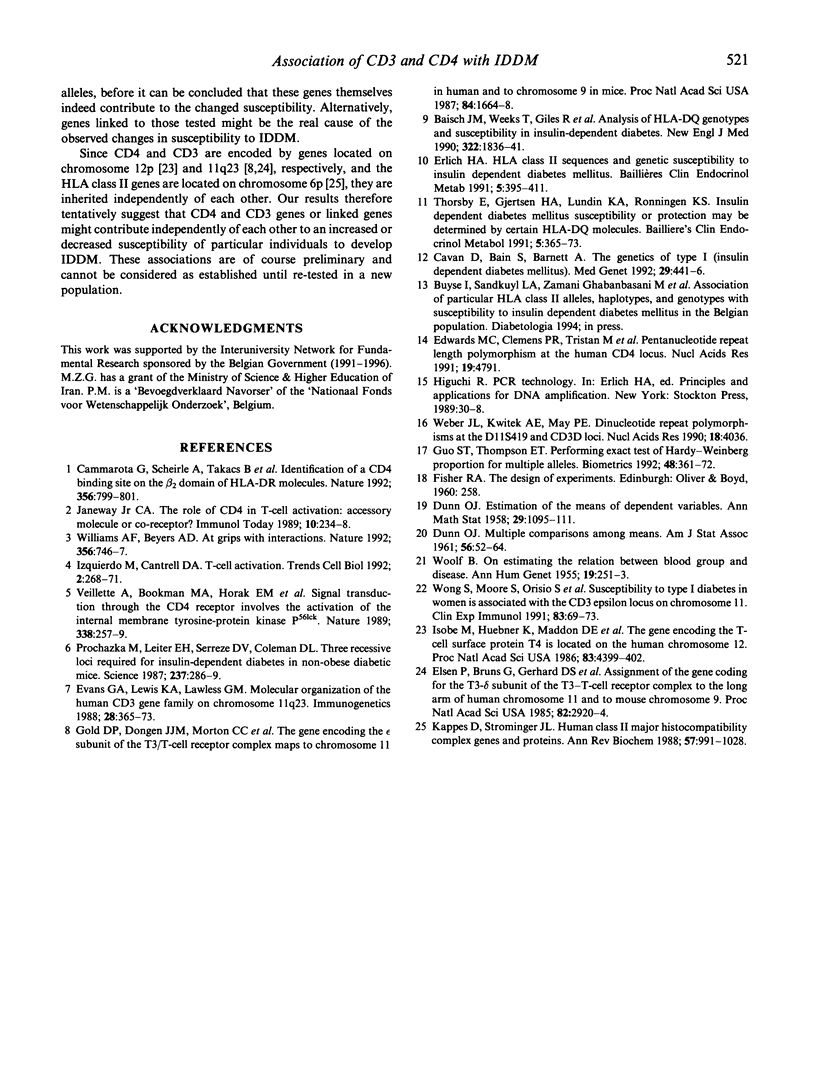
Selected References
These references are in PubMed. This may not be the complete list of references from this article.
- Baisch J. M., Weeks T., Giles R., Hoover M., Stastny P., Capra J. D. Analysis of HLA-DQ genotypes and susceptibility in insulin-dependent diabetes mellitus. N Engl J Med. 1990 Jun 28;322(26):1836–1841. doi: 10.1056/NEJM199006283222602. [DOI] [PubMed] [Google Scholar]
- Cammarota G., Scheirle A., Takacs B., Doran D. M., Knorr R., Bannwarth W., Guardiola J., Sinigaglia F. Identification of a CD4 binding site on the beta 2 domain of HLA-DR molecules. Nature. 1992 Apr 30;356(6372):799–801. doi: 10.1038/356799a0. [DOI] [PubMed] [Google Scholar]
- Cavan D., Bain S., Barnett A. The genetics of type I (insulin dependent) diabetes mellitus. J Med Genet. 1992 Jul;29(7):441–446. [PMC free article] [PubMed] [Google Scholar]
- Edwards M. C., Clemens P. R., Tristan M., Pizzuti A., Gibbs R. A. Pentanucleotide repeat length polymorphism at the human CD4 locus. Nucleic Acids Res. 1991 Sep 11;19(17):4791–4791. doi: 10.1093/nar/19.17.4791-a. [DOI] [PMC free article] [PubMed] [Google Scholar]
- Erlich H. A. HLA class II sequences and genetic susceptibility to insulin dependent diabetes mellitus. Baillieres Clin Endocrinol Metab. 1991 Sep;5(3):395–411. doi: 10.1016/s0950-351x(05)80138-7. [DOI] [PubMed] [Google Scholar]
- Evans G. A., Lewis K. A., Lawless G. M. Molecular organization of the human CD3 gene family on chromosome 11q23. Immunogenetics. 1988;28(5):365–373. doi: 10.1007/BF00364236. [DOI] [PubMed] [Google Scholar]
- Gold D. P., van Dongen J. J., Morton C. C., Bruns G. A., van den Elsen P., Geurts van Kessel A. H., Terhorst C. The gene encoding the epsilon subunit of the T3/T-cell receptor complex maps to chromosome 11 in humans and to chromosome 9 in mice. Proc Natl Acad Sci U S A. 1987 Mar;84(6):1664–1668. doi: 10.1073/pnas.84.6.1664. [DOI] [PMC free article] [PubMed] [Google Scholar]
- Guo S. W., Thompson E. A. Performing the exact test of Hardy-Weinberg proportion for multiple alleles. Biometrics. 1992 Jun;48(2):361–372. [PubMed] [Google Scholar]
- Isobe M., Huebner K., Maddon P. J., Littman D. R., Axel R., Croce C. M. The gene encoding the T-cell surface protein T4 is located on human chromosome 12. Proc Natl Acad Sci U S A. 1986 Jun;83(12):4399–4402. doi: 10.1073/pnas.83.12.4399. [DOI] [PMC free article] [PubMed] [Google Scholar]
- Izquierdo M., Cantrell D. A. T-cell activation. Trends Cell Biol. 1992 Sep;2(9):268–271. doi: 10.1016/0962-8924(92)90199-w. [DOI] [PubMed] [Google Scholar]
- Janeway C. A., Jr The role of CD4 in T-cell activation: accessory molecule or co-receptor? Immunol Today. 1989 Jul;10(7):234–238. doi: 10.1016/0167-5699(89)90260-0. [DOI] [PubMed] [Google Scholar]
- Kappes D., Strominger J. L. Human class II major histocompatibility complex genes and proteins. Annu Rev Biochem. 1988;57:991–1028. doi: 10.1146/annurev.bi.57.070188.005015. [DOI] [PubMed] [Google Scholar]
- Prochazka M., Leiter E. H., Serreze D. V., Coleman D. L. Three recessive loci required for insulin-dependent diabetes in nonobese diabetic mice. Science. 1987 Jul 17;237(4812):286–289. doi: 10.1126/science.2885918. [DOI] [PubMed] [Google Scholar]
- Veillette A., Bookman M. A., Horak E. M., Samelson L. E., Bolen J. B. Signal transduction through the CD4 receptor involves the activation of the internal membrane tyrosine-protein kinase p56lck. Nature. 1989 Mar 16;338(6212):257–259. doi: 10.1038/338257a0. [DOI] [PubMed] [Google Scholar]
- WOOLF B. On estimating the relation between blood group and disease. Ann Hum Genet. 1955 Jun;19(4):251–253. doi: 10.1111/j.1469-1809.1955.tb01348.x. [DOI] [PubMed] [Google Scholar]
- Weber J. L., Kwitek A. E., May P. E. Dinucleotide repeat polymorphisms at the D11S419 and CD3D loci. Nucleic Acids Res. 1990 Jul 11;18(13):4036–4036. doi: 10.1093/nar/18.13.4036. [DOI] [PMC free article] [PubMed] [Google Scholar]
- Williams A. F., Beyers A. D. T-cell receptors. At grips with interactions. Nature. 1992 Apr 30;356(6372):746–747. doi: 10.1038/356746a0. [DOI] [PubMed] [Google Scholar]
- Wong S., Moore S., Orisio S., Millward A., Demaine A. G. Susceptibility to type I diabetes in women is associated with the CD3 epsilon locus on chromosome 11. Clin Exp Immunol. 1991 Jan;83(1):69–73. doi: 10.1111/j.1365-2249.1991.tb05590.x. [DOI] [PMC free article] [PubMed] [Google Scholar]
- van den Elsen P., Bruns G., Gerhard D. S., Pravtcheva D., Jones C., Housman D., Ruddle F. A., Orkin S., Terhorst C. Assignment of the gene coding for the T3-delta subunit of the T3-T-cell receptor complex to the long arm of human chromosome 11 and to mouse chromosome 9. Proc Natl Acad Sci U S A. 1985 May;82(9):2920–2924. doi: 10.1073/pnas.82.9.2920. [DOI] [PMC free article] [PubMed] [Google Scholar]


